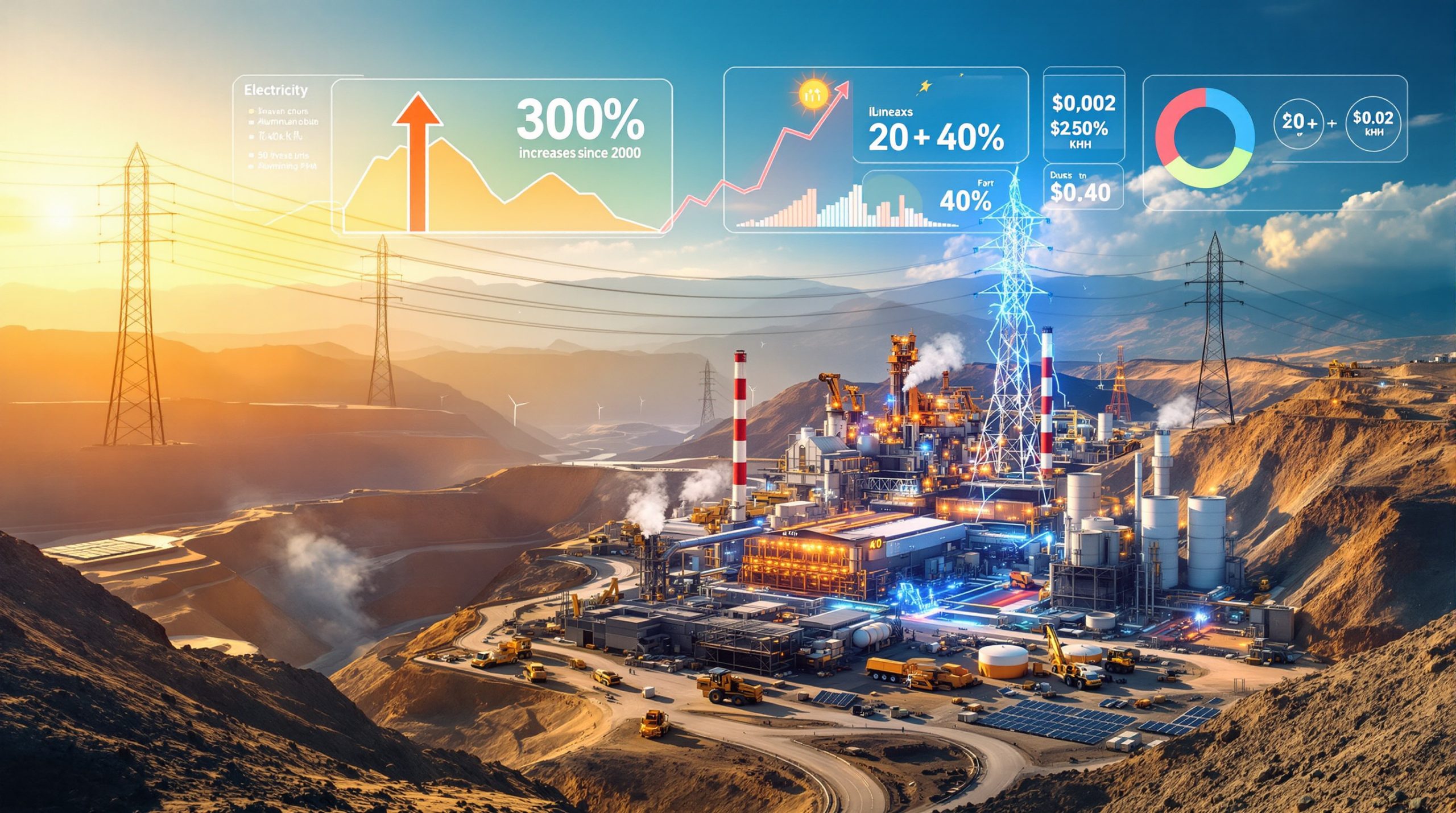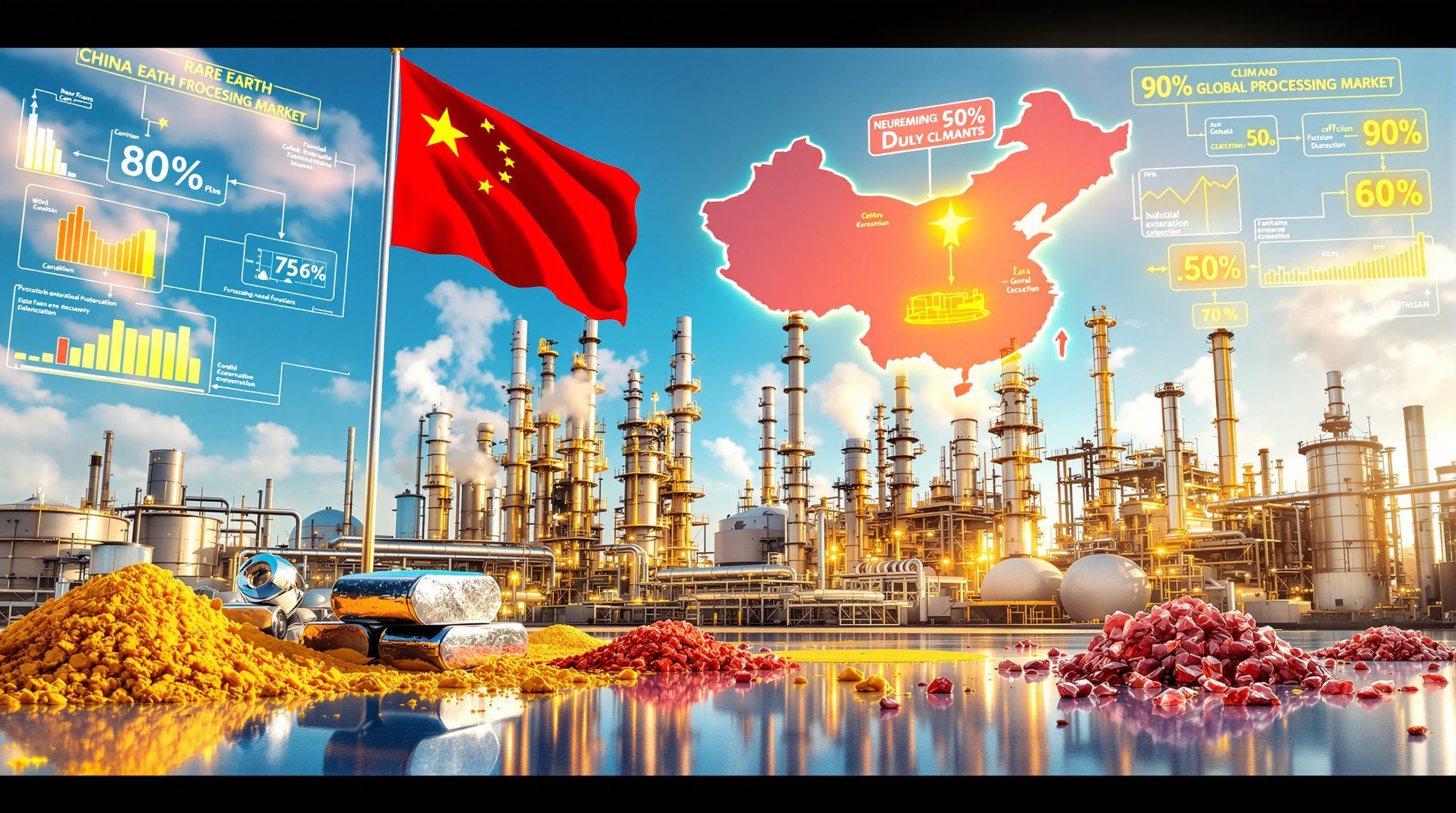What's Causing Secondary Aluminum Prices to Fall?
The secondary aluminum market is experiencing a sustained downward pricing trend in May 2025, primarily driven by fundamental weaknesses in demand patterns. Market data reveals that downstream buyers have adopted an increasingly cautious approach, creating what industry analysts describe as a "negative feedback loop" where falling prices further discourage purchasing activity.
"The current market exhibits strong wait-and-see sentiment among buyers, perpetuating a cycle of declining prices and weakening demand," notes SMM's weekly market report. This hesitancy has directly contributed to substantial price deteriorations across various aluminum products.
Weakening Demand as the Primary Driver
The automotive and construction sectors, traditionally major consumers of secondary aluminum, have shown significantly reduced activity in recent months. Manufacturing output data indicates the automotive sector's growth has slowed to just 2.3% year-over-year in Q1 2025, considerably below the 6.7% growth seen during the same period last year.
This demand stagnation isn't uniform across regions. Guangdong province, with its heavy automotive manufacturing base, has experienced a sharper demand decline (approximately 18% year-over-year) compared to construction-focused Zhejiang's more modest 11% reduction.
Price Decline Metrics
Recent market data paints a clear picture of the pricing challenges:
- SMM A00 aluminum price dropped 240 yuan/mt to 19,610 yuan/mt
- Domestic SMM ADC12 price decreased 100 yuan/mt to the 20,200-20,400 yuan/mt range
- Overseas ADC12 quotes slightly lowered to $2,410-2,440/mt
- Current ADC12 premium over A00 aluminum has narrowed to approximately 600-800 yuan/mt (down from around 1,000 yuan/mt in 2024)
This represents a significant historical shift. For context, ADC12 averaged 21,500 yuan/mt throughout 2022, demonstrating how substantially market conditions have deteriorated.
Supply-Side Response
Secondary aluminum smelters have implemented various strategies to navigate the challenging market environment:
- A Jiangsu-based smelter reduced output by 15% in May 2025 due to margin compression
- Approximately 8% of smelters nationwide have temporarily halted operations
- Many producers are following primary aluminum price trends with corresponding reductions
- Some facilities are exploring alternative alloy production to diversify revenue streams
Analysis of current market dynamics insights suggests ADC12 prices will likely remain under pressure without substantial demand recovery or significant supply-side adjustments. The breakeven point for most ADC12 producers now hovers around 19,800 yuan/mt, leaving many operations with razor-thin margins or operating at a loss.
How Are Import Markets Affecting Secondary Aluminum Pricing?
The relationship between domestic and imported secondary aluminum creates additional complexity in the current market environment. The persistent import loss situation—approximately 600 yuan/mt—has created significant barriers for international suppliers attempting to maintain market share in China.
Import-Domestic Price Differential
Import losses are calculated using the formula: (Overseas Price × Exchange Rate + Tariffs) – Domestic Price. This calculation reveals the substantial competitive disadvantage facing imported material:
| Component | Value | Notes |
|---|---|---|
| Overseas ADC12 | $2,425/mt | Average quote |
| Exchange Rate | 6.95 CNY/USD | Current rate |
| Import Tariff | 5% | Standard rate |
| Logistics | 300 yuan/mt | Port to factory |
| Effective Import Cost | 21,050 yuan/mt | Calculated total |
| Domestic Price | 20,300 yuan/mt | Current average |
| Import Loss | ~750 yuan/mt | Actual market disadvantage |
This price gap effectively limits international suppliers' ability to compete in the Chinese market, creating downward pressure as global producers attempt to maintain market share by reducing prices.
Global Market Interconnections
Trade analysts highlight the "downward synchronization" between global and domestic markets, noting that international market weaknesses exacerbate China's domestic challenges. Japanese exporters, for instance, reduced ADC12 quotes by $30/mt in April 2025 to remain competitive, illustrating the global nature of price adjustments.
The global oversupply situation further complicates recovery prospects. Secondary aluminum production capacity has expanded significantly worldwide over the past three years, driven by sustainability initiatives and recycling incentives. This expanded capacity now faces insufficient demand, creating persistent downward price pressure globally.
Trade Flow Implications
Import volumes have declined substantially, with 2025 year-to-date figures showing approximately 300,000 metric tons imported compared to 450,000 metric tons during the same period in 2024. This 33% reduction reflects both weak demand and the uneconomical nature of imports under current pricing conditions.
Regional trade agreements, particularly with ASEAN countries, have maintained some flow of material despite the challenging economics. The RCEP agreement's preferential tariff treatment (2% vs. standard 5%) provides Southeast Asian suppliers with a slight advantage, though even this benefit has proven insufficient to maintain historical import levels.
"The current import-export dynamics represent a fundamental shift from the pattern observed throughout 2020-2023, when China was a net importer of secondary aluminum," explains an SMM analyst. "The reversal indicates both domestic overcapacity and demand weakness."
What Are the Key Market Indicators for Secondary Aluminum?
Understanding secondary aluminum market dynamics requires monitoring several interconnected indicators that provide early signals of potential price movements and market shifts.
Price Spread Analysis
The relationship between primary and secondary aluminum prices offers crucial insights:
- Current ADC12 premium over A00 aluminum: approximately 600-800 yuan/mt
- Historical average (2020-2024): 950-1,100 yuan/mt premium
- Premium compression indicates squeezed margins for secondary producers
- Narrowing below 600 yuan/mt would likely trigger additional production cuts
This spread functions as a key profitability metric for secondary producers, with the current compression reflecting both weak demand and high production costs. Historical analysis shows that sustained periods of narrow spreads typically precede significant market adjustments, either through reduced production or eventual price recovery.
Scrap Metal Supply Factors
Scrap availability and pricing form the foundation of the secondary aluminum industry:
- Aluminum scrap accounts for 70-80% of ADC12 production expenses
- Scrap collection rates fell 12% year-over-year in Q1 2025 according to SMM data
- Scrap is classified into "twitch" (high purity) and "mixed" categories, affecting refining costs
- Environmental regulations have tightened scrap availability in key regions
A Henan-based recycler reported a 20% scrap cost increase due to tightened environmental policies, highlighting how regulatory changes can significantly impact the raw material supply chain. China's 2025 Recycling Law implementation has created additional compliance requirements that have reduced informal collection channels while increasing documentation and processing costs.
Production Cost Considerations
Manufacturing economics play a decisive role in secondary aluminum pricing:
- Energy costs constitute 15-20% of production expenses
- Electricity prices in major producing regions:
- Yunnan: ¥0.45/kWh
- Henan: ¥0.52/kWh
- Guangdong: ¥0.65/kWh
- Labor costs have increased 8-12% year-over-year in major industrial centers
- Environmental compliance expenses average 300-450 yuan/mt
These cost pressures have forced producers to implement efficiency improvements, with many investing in automated sorting technologies and energy recovery systems. Nevertheless, the current price environment has pushed approximately 8% of production capacity offline, with more curtailments possible if prices continue declining.
What's the Short-Term Outlook for Secondary Aluminum?
Market participants and industry analysts have developed several scenarios for how the secondary aluminum market might evolve over the coming months, with most forecasts suggesting continued challenges.
May 2025 Market Projections
Based on current trends, the consensus outlook remains cautious:
- Prices likely to remain under pressure without significant demand recovery
- ADC12 expected to trade in the 19,800-20,500 yuan/mt range through Q2 2025
- Further production cuts anticipated if prices approach the 19,800 yuan/mt breakeven level
- Seasonal summer manufacturing increase may provide limited support
Market analysts warn of "prolonged stagnation" without government stimulus or demand recovery. The current environment represents a structural challenge rather than a cyclical downturn, potentially requiring more substantial adjustments to restore market balance.
Demand Recovery Indicators to Watch
Several key metrics may signal an improving market trajectory:
- Automotive production growth: A return to 5%+ growth rates would absorb significant volume
- Construction starts and completions: Currently down 8% year-over-year
- Consumer durables manufacturing: Appliance production remains 6% below 2024 levels
- Infrastructure investment: Recently announced initiatives like Zhejiang's $150M infrastructure package could boost demand
"The secondary aluminum market's recovery will likely be led by infrastructure spending rather than consumer-driven sectors," suggests an industry economist. "Government stimulus programs typically flow through construction and public works projects before reaching consumer markets."
Price Support Thresholds
Market participants identify several potential stabilization mechanisms:
- Production cost floors (approximately 19,800 yuan/mt) limit sustainable price declines
- The increasing disconnect between scrap prices and finished alloy values will eventually force market rationalization
- Historically, prices have rarely remained below production costs for more than 2-3 months
A technical analysis of ADC12 prices suggests that if primary aluminum prices rise by 10%, secondary prices typically follow with a 6-8% increase after a 2-4 week lag period. This relationship provides a potential pathway for recovery if primary aluminum markets strengthen.
How Does the Secondary Aluminum Market Compare to Primary Production?
Secondary aluminum production offers distinct advantages over primary smelting, creating a growing market share despite current pricing challenges.
Economic and Environmental Considerations
The sustainability profile of secondary aluminum provides compelling advantages:
- Energy consumption is 92-95% lower than primary production (15 GJ/t vs. 200 GJ/t)
- Carbon footprint shows dramatic reduction: 0.5t CO₂/t for secondary vs. 8.6t CO₂/t for primary
- Water usage is approximately 86% lower for recycled production
- Raw material costs are typically 30-40% lower when scrap is adequately available
These environmental benefits have attracted increasing regulatory support and consumer preference. The EU's Carbon Border Adjustment Mechanism (CBAM), for instance, provides a competitive advantage to secondary aluminum through lower carbon-based import fees.
Market Share Dynamics
Secondary aluminum's position continues to evolve within the broader aluminum industry:
- Secondary aluminum comprises approximately 33% of global supply (2025 estimate)
- Market share has increased from 28% in 2020, reflecting sustainability initiatives
- Automotive and packaging industries remain primary consumers, with electronics growing
- Regional adoption varies significantly: EU (41%), North America (38%), China (33%)
Tesla's 2024 Sustainability Report notes that ADC12 and similar recycled alloys now constitute approximately 40% of its die-cast components, highlighting the growing industrial acceptance of secondary materials for demanding applications.
Quality Differentials
Not all secondary aluminum products offer equivalent performance characteristics:
- ADC12's 9.6-12% silicon content optimizes castability and mechanical properties
- Different grades command varying price premiums based on composition consistency
- Aluminum series comparison:
Series Primary/Secondary Typical Applications Price Premium 1xxx Primarily primary Electrical conductors High 2xxx Mix, higher primary Aerospace, defense Very high 3xxx Mix Food packaging, heat exchangers Moderate ADC12 Primarily secondary Automotive components Standard
As manufacturing technologies advance, the quality gap between primary and secondary materials continues to narrow. Improved sorting technologies, better scrap management, and advanced refining processes have expanded secondary aluminum's application range significantly over the past decade.
FAQ: Secondary Aluminum Market Trends
What is ADC12 and how is it used?
ADC12 is an aluminum-silicon alloy specification containing 9.6-12% silicon along with controlled amounts of copper (≤2.0%), iron (≤1.0%), and other elements. This composition delivers:
- Excellent castability for complex automotive components
- Good corrosion resistance for exterior applications
- Suitable strength-to-weight ratio for structural parts
- Cost-effectiveness compared to primary aluminum alloys
Common applications include engine components, transmission housings, wheels, and various structural elements in automobiles. The electronics industry also uses ADC12 for heat sinks and component housings where thermal management is important.
How does scrap aluminum pricing affect secondary aluminum?
The relationship between scrap and finished alloy prices creates a complex dynamic:
- Scrap typically represents 70-80% of secondary aluminum production costs
- Collection rates fluctuate based on consumer activity and economic conditions
- Processing costs increase with stricter quality requirements
- Regional environmental regulations significantly impact availability
When scrap prices increase without corresponding rises in finished product prices, secondary producers face margin compression. Conversely, when secondary aluminum prices fall, scrap dealers often withhold material, creating supply constraints that eventually force price corrections.
What factors might reverse the current price decline?
Several potential catalysts could stabilize or reverse secondary aluminum's price trajectory:
- Production discipline: Sustained capacity reductions of 10-15% would rebalance supply-demand
- Automotive recovery: Electric vehicle production growth typically requires 25-40% more aluminum per vehicle
- Government stimulus: China's resource stimulus programs that target construction and transportation
- Energy cost increases: Rising electricity prices would disproportionately affect primary aluminum, improving secondary's competitive position
- Scrap supply constraints: Reduced collection rates eventually create raw material shortages
Historical analysis suggests that secondary aluminum markets typically recover 2-3 months after primary aluminum prices stabilize, with recovery patterns often beginning in high-growth regions before spreading globally.
How do regional differences impact secondary aluminum markets?
Regional variations create distinct market environments:
- China: Largest producer and consumer, with relatively new recycling infrastructure and growing environmental focus
- Europe: Most mature recycling system with highest secondary utilization rates, supported by strong regulatory frameworks
- North America: Well-established collection systems but fragmented processing capacity
- Southeast Asia: Emerging processing hub leveraging lower labor costs and proximity to China
These regional characteristics create different pricing dynamics, with European secondary aluminum typically commanding premium pricing due to more stringent quality controls and environmental credentials, while Southeast Asian production often competes primarily on cost.
Market Data: Secondary Aluminum Price Trends
| Date | SMM A00 Price (yuan/mt) | SMM ADC12 Price Range (yuan/mt) | Overseas ADC12 Quote ($/mt) | Import Loss (yuan/mt) |
|---|---|---|---|---|
| May 2025 | 19,610 | 20,200-20,400 | 2,410-2,440 | ~600 |
| Previous Trading Day | 19,850 | 20,300-20,500 | Higher | ~600 |
| Change | -240 | -100 | Slight decrease | Unchanged |
| YoY Change | -8.2% | -6.5% | -5.8% | Expanded from ~450 |
Market Insight: "The persistence of the import loss situation reflects structural overcapacity rather than temporary market conditions," according to SMM's chief aluminum analyst. "This suggests that international producers may need to accept lower margins to maintain market access in the medium term."
Historical Price Comparison
| Period | Average ADC12 Price (yuan/mt) | Premium over A00 | Market Condition |
|---|---|---|---|
| 2022 Average | 21,500 | ~1,050 | Strong demand |
| 2023 Average | 20,800 | ~950 | Balanced |
| 2024 Average | 20,600 | ~900 | Weakening |
| 2025 YTD | 20,350 | ~750 | Bearish |
This historical perspective illustrates the gradual erosion of both absolute pricing and the premium commanded by secondary aluminum, reflecting the persistent weakening of market fundamentals over recent years.
Conclusion: Key Takeaways for Market Participants
The secondary aluminum market faces significant challenges that are likely to persist through mid-2025:
- Demand weakness remains the primary price driver, with downstream industries showing limited signs of recovery
- Import-domestic price differentials continue to disadvantage international suppliers
- Production costs have reached critical thresholds where further price declines will force additional capacity offline
- Environmental and sustainability advantages provide long-term support despite current pricing pressures
For industry participants, maintaining operational flexibility and carefully monitoring key indicators—particularly automotive production rates and scrap availability—will be essential for navigating the current market environment. Furthermore, understanding global commodities insights and staying informed about [mining and finance trends](https://discoveryalert.com.au/news/mining-and-finance
Seeking Instant Alerts on Major Mining Discoveries?
Stay ahead of the market with Discovery Alert's proprietary Discovery IQ model, which provides real-time notifications on significant ASX mineral discoveries, turning complex data into actionable investment opportunities. Visit the Discovery Alert discoveries page to understand why major mineral discoveries can lead to substantial market returns and start your 30-day free trial today.




